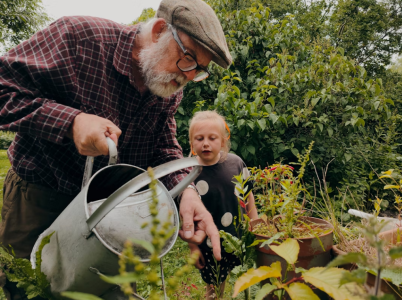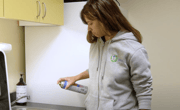Grandparents knew best—10 home remedies they swore by
- Replies 0
Generations before us often leaned on simple, practical solutions to deal with everyday ailments, many of which were passed down like family heirlooms.
While some of these remedies were rooted in tradition rather than hard science, they remain part of our cultural memory and comfort.
Grandparents trusted these fixes not just for their perceived effectiveness, but also for the care and intention behind them.
Whether they truly healed or simply soothed, these remedies shaped the way families approached health at home.
1. Chicken Soup
Perhaps the most iconic of all remedies, chicken soup has long been believed to provide relief for colds, congestion, and even the soul. Warm broth and soft noodles do more than comfort—studies have shown the steam can help clear nasal passages and reduce inflammation.
For many, it’s the dish that symbolizes nurturing care more than any over-the-counter option. It’s no wonder grandparents swore by a bowl when illness struck.
2. Warm Salt Water
For a sore throat, few remedies are as classic as gargling with warm salt water. The mixture doesn’t cure an infection, but it can ease irritation, reduce swelling, and loosen mucus.
Generations relied on it because it was cheap, quick, and always available in any kitchen. It remains one of the simplest remedies still recommended by doctors today.
3. Witch-Hazel
Despite sounding like something pulled from a spellbook, witch-hazel is a real plant with anti-inflammatory properties. It has been used for swelling, bruises, insect bites, and even hemorrhoids, offering natural relief across a variety of issues.
Older generations often kept a bottle in the medicine cabinet, trusting it as an all-purpose fix. Its staying power proves how effective it can still be.
4. Bactine
Once a first-aid staple, Bactine was widely used by grandparents for scratches, scrapes, and cuts. Its antiseptic properties reduced infection risk while also easing pain and itching.
Some families swore by it so strongly that it was the answer to nearly every small injury. While not as common today, it still exists and remains useful for minor wounds.
5. Saltines and 7-Up
Stomach aches were often treated with a combination of Saltine crackers and 7-Up, a pairing many still turn to today. Crackers are bland enough to be tolerated while helping absorb stomach acid, and carbonation from the soda eases pressure.
Though ginger ale has gained more popularity as a stomach remedy, this duo remains firmly in old-school tradition. Sometimes, it’s the comfort of the ritual itself that helps most.
Also read: Everyday household items could be harming your health—here’s how to stay safe
6. Cold Tea Bags on the Eyes
Using tea bags for tired or puffy eyes is one of those remedies that seems unusual until you try it. The caffeine helps shrink blood vessels, which reduces swelling, while the coolness calms irritation.
Many grandparents turned to this trick as a natural way to refresh the eyes after a long day. It’s a method that’s still recommended in beauty routines today.
7. Oatmeal Bath
When dealing with chicken pox or skin irritation, grandparents often suggested a soak in oatmeal. Certain compounds in oatmeal can protect the skin barrier, ease itching, and soothe inflammation.
This remedy became so trusted that even the FDA regulates colloidal oatmeal products for skin care. From eczema to rashes, oatmeal baths were and remain a reliable form of relief.
8. Apple Cider Vinegar
Notorious for its sharp taste, apple cider vinegar has been used for everything from soothing sore throats to aiding digestion. While some benefits are backed by science, others lean more on anecdotal tradition.
For many grandparents, mixing it into hot tea was a go-to home cure despite its unpleasant flavor. Whether or not you enjoy it, the practice has never really gone away.
Also read: Still suffering from frozen shoulder? Discover the surprising home remedies that speed up recovery
9. Mercurochrome
Known for its bright red tint, Mercurochrome was once a widely trusted antiseptic. Used from the 1920s through the mid-20th century, it was applied to cuts and scrapes with near-universal approval.
But it contained mercury, leading to its FDA ban in 1998. For older generations, though, the memory of that little bottle is unforgettable.
10. Chewing Gum
A surprisingly simple trick, chewing gum was sometimes suggested as a way to distract from headaches or even stop a song stuck in your head. While it may not seem like medicine, small rituals like this were part of the toolkit of everyday remedies.
Grandparents often valued solutions that didn’t involve pills, relying instead on small comforts. Chewing gum was just one of those unlikely fixes that worked more often than expected.
Read next: Straighten up: 10 simple fixes that can ease shoulder pain

Even though medicine has advanced, many people still hold fond memories of these remedies passed down through generations. Which of these have you tried, and do you think they still hold a place in today’s world? Share your stories in the comments and let us know which home remedy from your grandparents you still believe in.
While some of these remedies were rooted in tradition rather than hard science, they remain part of our cultural memory and comfort.
Grandparents trusted these fixes not just for their perceived effectiveness, but also for the care and intention behind them.
Whether they truly healed or simply soothed, these remedies shaped the way families approached health at home.
1. Chicken Soup
Perhaps the most iconic of all remedies, chicken soup has long been believed to provide relief for colds, congestion, and even the soul. Warm broth and soft noodles do more than comfort—studies have shown the steam can help clear nasal passages and reduce inflammation.
For many, it’s the dish that symbolizes nurturing care more than any over-the-counter option. It’s no wonder grandparents swore by a bowl when illness struck.
2. Warm Salt Water
For a sore throat, few remedies are as classic as gargling with warm salt water. The mixture doesn’t cure an infection, but it can ease irritation, reduce swelling, and loosen mucus.
Generations relied on it because it was cheap, quick, and always available in any kitchen. It remains one of the simplest remedies still recommended by doctors today.
3. Witch-Hazel
Despite sounding like something pulled from a spellbook, witch-hazel is a real plant with anti-inflammatory properties. It has been used for swelling, bruises, insect bites, and even hemorrhoids, offering natural relief across a variety of issues.
Older generations often kept a bottle in the medicine cabinet, trusting it as an all-purpose fix. Its staying power proves how effective it can still be.
4. Bactine
Once a first-aid staple, Bactine was widely used by grandparents for scratches, scrapes, and cuts. Its antiseptic properties reduced infection risk while also easing pain and itching.
Some families swore by it so strongly that it was the answer to nearly every small injury. While not as common today, it still exists and remains useful for minor wounds.
5. Saltines and 7-Up
Stomach aches were often treated with a combination of Saltine crackers and 7-Up, a pairing many still turn to today. Crackers are bland enough to be tolerated while helping absorb stomach acid, and carbonation from the soda eases pressure.
Though ginger ale has gained more popularity as a stomach remedy, this duo remains firmly in old-school tradition. Sometimes, it’s the comfort of the ritual itself that helps most.
Also read: Everyday household items could be harming your health—here’s how to stay safe
6. Cold Tea Bags on the Eyes
Using tea bags for tired or puffy eyes is one of those remedies that seems unusual until you try it. The caffeine helps shrink blood vessels, which reduces swelling, while the coolness calms irritation.
Many grandparents turned to this trick as a natural way to refresh the eyes after a long day. It’s a method that’s still recommended in beauty routines today.
7. Oatmeal Bath
When dealing with chicken pox or skin irritation, grandparents often suggested a soak in oatmeal. Certain compounds in oatmeal can protect the skin barrier, ease itching, and soothe inflammation.
This remedy became so trusted that even the FDA regulates colloidal oatmeal products for skin care. From eczema to rashes, oatmeal baths were and remain a reliable form of relief.
8. Apple Cider Vinegar
Notorious for its sharp taste, apple cider vinegar has been used for everything from soothing sore throats to aiding digestion. While some benefits are backed by science, others lean more on anecdotal tradition.
For many grandparents, mixing it into hot tea was a go-to home cure despite its unpleasant flavor. Whether or not you enjoy it, the practice has never really gone away.
Also read: Still suffering from frozen shoulder? Discover the surprising home remedies that speed up recovery
9. Mercurochrome
Known for its bright red tint, Mercurochrome was once a widely trusted antiseptic. Used from the 1920s through the mid-20th century, it was applied to cuts and scrapes with near-universal approval.
But it contained mercury, leading to its FDA ban in 1998. For older generations, though, the memory of that little bottle is unforgettable.
10. Chewing Gum
A surprisingly simple trick, chewing gum was sometimes suggested as a way to distract from headaches or even stop a song stuck in your head. While it may not seem like medicine, small rituals like this were part of the toolkit of everyday remedies.
Grandparents often valued solutions that didn’t involve pills, relying instead on small comforts. Chewing gum was just one of those unlikely fixes that worked more often than expected.
Read next: Straighten up: 10 simple fixes that can ease shoulder pain
Key Takeaways
- Generations of families leaned on home remedies like chicken soup, salt water, and witch-hazel to treat everyday ailments.
- Some, like oatmeal baths and tea bags on the eyes, are backed by science, while others, like apple cider vinegar and chewing gum, remain more tradition than medicine.
- Remedies such as Bactine and Mercurochrome were once staples but have faded with time or been replaced due to health concerns.
- Even with modern medicine, these old-fashioned cures remain part of cultural memory, blending comfort, care, and the wisdom of grandparents.







